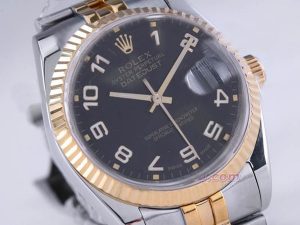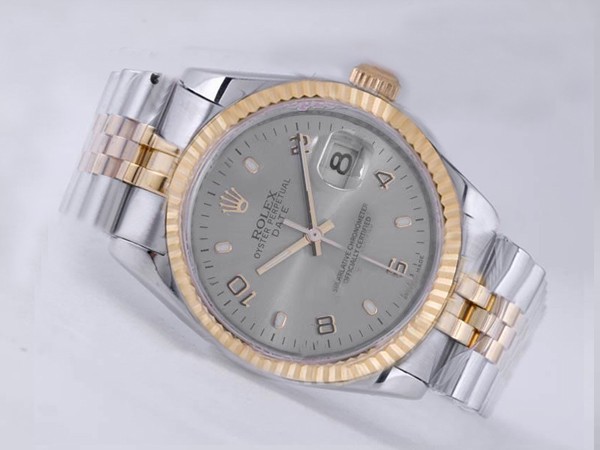The movement in the present A. Lange & Söhne 1815 Chronograph is the same with the one found in the Datograph with the date and power reserve complications removed. As long as the movements go, you would be hard-pressed to find someone who has seen a Lange movement personally and doesn’t need to think that they’re superlative. I have a great personal leaning toward Lange and the 1815 Chronograph in particular as it is a grail replica watch and was my first encounter with top-end watch-making. 
The Caliber is a manually wound movement with a column wheel flyback chronograph complication, free-sprung balance spring, and 60 hours of power reserve. By doing away with the date and power reserve complication, Lange has managed to shave 1.5mm off of this caliber’s width relative to the one used in the Datograph. In usual Lange fashion, the finishing on the movement is amazing.
In addition to the ample amounts of chamfering, engraving, polishing, heat bluing, and Lange’s signature gold chatons. The replica Lange has designed the movement to be a visual delight. Through the sapphire crystal case back, one can see all the components consisting of the column-wheel, flyback mechanism levers, the snail of the minute counter which jumps precisely at 60 seconds and doesn’t creep along, and even the hand-engraved balance cock, with huge balance spring and very traditional swan-neck regulator. Mechanically, this is one of the finest chronograph movements in regular production today.
The major attraction of this particular release, however, is not the movement which is shared among all the 1815 chronograph variants, but the dial which is a jet black piece of solid silver. This combination of polished hands and a black dial is something we have found to be very detrimental for legibility as it can often cause the hands to seem to just disappear. It would be uncharacteristic of Lange to make a poor design choice like this, so I will reserve judgement until I see one with your own eyes.
The final update to the dial is the use of a pulsometer scale which hearkens back to the pulsometer scale from the original A. Lange & Söhne 1815 Chronograph from 2004. As a matter of fact, the brand tells us that this is the first time they have offered a black pulsation dial in a white metal case. A pulsometer is used to measure heart beat and is a more apropos option for a dressy watch like the fake A. Lange & Söhne 1815 Chronograph than a tachymeter scale.
In keeping with the classic and dressy look, it has a simple fluted crown and rectangular pushers. Apart from the lacking of date, power reserve indicator, and applied markers, the choice of case material differentiates the replica A. Lange & Söhne 1815 Chronograph from the Datograph. While the former is offered in white gold, the other one is in platinum.
